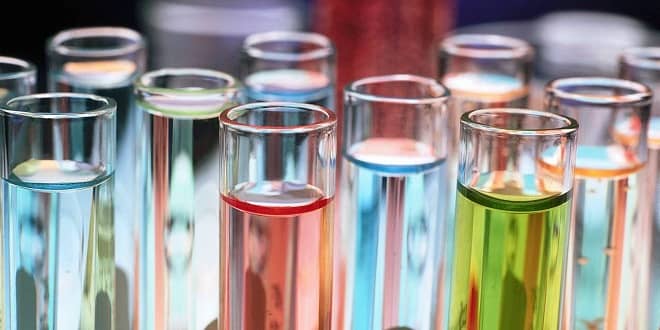Titration of Sodium Carbonate
-
Carbonate Chemistry
-
CO2 in atmosphere and dissolved in water
-
Major global buffering system
-
Industrial sources
–limestone: CaCO3(s) + heat à CaO(s) + CO2(g)
–trona (Na2CO3) deposits
-
Sodium Carbonate As a Base
-
Commercially important
–source or base or carbonate for industrial processes
–washing soda (automatic dishwashers)
-
Carbonate is a moderately strong base
-
Titration of Na2CO3 with HCl
-
Titration of Sodium Carbonate
-
Derivative Plots
-
Determination of Carbonate in a Sample
-
Effects of Carbonate Equilibria on Titration of Carbonate
-
Shift in Phenolphthalein Endpoint
-
Boiling to Enhance Second Endpoint
-
Effect of CO2 Absorption on Phenophthalein Endpoint
-
Reaction of CO2 with carbonate solutions
CO2(g) + H2O(l) + CO32-(aq) à 2HCO3-(aq)
–Let 1 mmol CO2 react with 1 mmol CO32-
–For titration with HCl to BCG endpoint to form H2CO3
-
Initial 1 mmol CO32- would require 2 mmol HCl
-
Resultant 2 mmol HCO3- requires 2 mmol HCl
-
Net effects
–Volume of HCl require to reach phenolphthalein end decreases
-
This effect may be avoided by excluding air from the titration system.
–Volume required to reach bromcresol green endpoint is not affected.
-
Recommendation
–Use BCG endpoint to calculate amount of carbonate in your sample
-
Effect of Absorbed CO2 on Titration of Na2CO3 with HCl
-
Boiling to Enhance Visual Endpoint in Titration of Na2CO3 with HCl
-
Summary: Titration of Sodium Carbonate
-
Titration of Na2CO3 with strong acid yields two equivalence points
-
At phenolphthalein end point
–Na2CO3 à NaHCO3
-
At bromcresol green (or methyl red) end point
–All carbonate is converted to H2CO3
-
pH of carbonate solutions may be unstable due to exchange of CO2 with atmosphere.
…




